Experimental low-profile aircraft Northrop Tacit Blue (USA)
The appearance of the project with the symbol Tacit Blue was the result of an extensive research program aimed at creating technologies for reducing the visibility of aircraft. By the mid-seventies, American science and industry had time to present developments in this area, which now needed to be tested in practice. In addition, it was decided to develop a new project with a certain basis for the future practical application of technology. Thus, one of the future experimental aircraft was supposed to be a technology demonstrator in two directions at once.
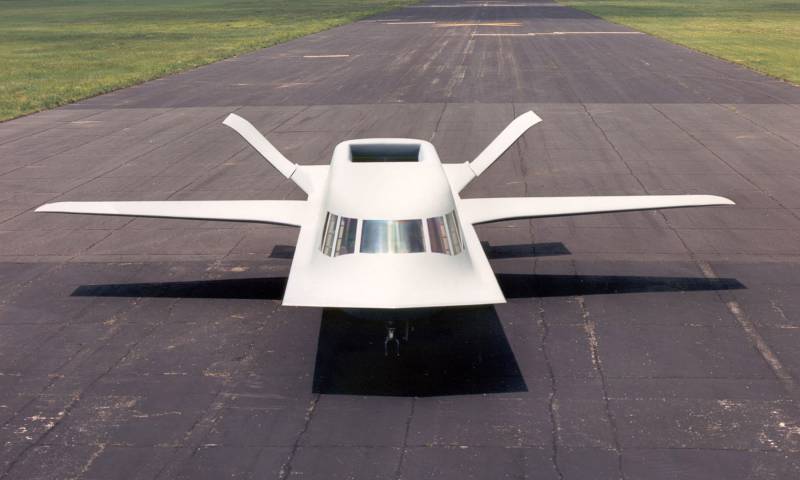
General view of the aircraft Northrop Tacit Blue. Photo: National Museum of the USAF / Nationalmuseum.af.mil
Studying the theoretical part of reducing visibility, the military and researchers tried to determine the future role of advanced equipment in the air force, for which various options for the use of aircraft were proposed and considered. In December, the United States Air Force 1976 and the Agency for Advanced Projects DARPA launched the BSAX program (Battlefield Surveillance Aircraft Experimental). The aim of the project was to create a promising aircraft with the lowest possible visibility for the means of detecting the enemy, equipped with a set of various special equipment. Such a plane was supposed to "hang" over the battlefield, remaining invisible to the enemy, while conducting reconnaissance and transferring data to his troops.
According to some sources, the BSAX program was considered as an addition to the controlled arms. The transfer of target designation with the lowest possible delays allowed to maximize the efficiency of the use of high-precision systems. This did not exclude the possibility of working together with compounds that use less advanced weapons. Thus, the possibility of permanent presence over the battlefield with tracking all events gave the troops a certain advantage.
The program BSAX, for obvious reasons, received a high level of secrecy. The project was classified as a so-called. "Black", because of what, in particular, promising unobtrusive reconnaissance aircraft should not have any official designation that could reveal its purpose. The works were conducted under the “neutral” name Tacit Blue (“Silent Blue”). In addition, further development has received several new unofficial names. Not left without their own nickname, and experts who worked with the experimental machine.
The development of the BSAX was commissioned by Northrop. This organization had extensive experience in building aircraft of the most daring appearance, and therefore could cope with the tasks. It should be noted that the results of the Tacit Blue project could be used in the future to create a new aviation techniques with specific capabilities. In particular, since the late seventies, Northrop engineers have been working on the ATB project, which subsequently led to the appearance of the invisible strategic B-2 Spirit bomber.
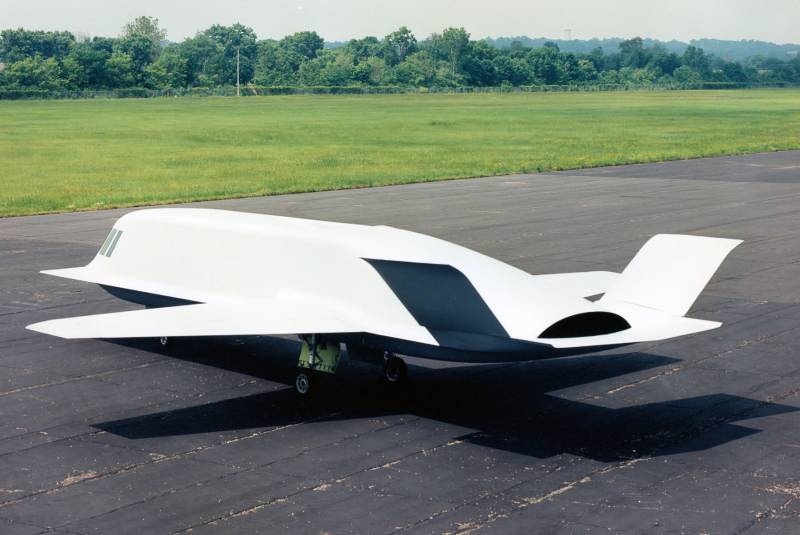
The contours of the machine were formed in view of the decrease in radar visibility. Photo: National Museum of the USAF / Nationalmuseum.af.mil
The main objective of the BSAX / Tacit Blue project was to reduce the visibility for radar detection devices to the maximum extent possible. To meet these requirements, it was even possible to reduce the basic flight characteristics of the aircraft. Since the project was purely experimental in nature and should not have been brought to mass production, it was proposed to use all the newest and bold ideas. According to various sources, about a dozen ideas of one kind or another aimed at increasing stealth were used in the design of the future aircraft. The principles of absorption and reflection of electromagnetic radiation from the source were applied.
The widest application of new ideas and solutions led to the formation of a very unusual appearance of the aircraft. In addition, already preliminary checks of the proposed design and blowing in the wind tunnel showed specific characteristics of the proposed appearance, due to which the project had to use various new tools and systems. However, the main task of the work was to reduce the visibility, so that the complexity of the design and on-board equipment was not considered unacceptable.
According to the results of the research, the necessary contours of the aircraft were identified that are capable of solving the assigned tasks. It was found that the BSAX aircraft should be built according to the normal aerodynamic configuration with a low wing. This required the use of a trapezoidal wing in plan and a V-shaped tail with separated keels, as well as some other non-standard technical solutions. In particular, the need was established to create a non-standard form of the fuselage.
The main and largest unit of the Northrop Tacit Blue aircraft was the fuselage of the original design. Its nose part has received the upper unit of relatively high height, made in the form of a curved part and equipped with a glazing of the cockpit. Behind a similar nose was the central compartment, which had sloping sides and a horizontal roof, connected by curved panels. Provided for the upper air intake, made in the form of a recess, smoothly mated with the other elements of the fuselage. The tail part of the fuselage served as a fairing and had a tapering shape. The bottom of the fuselage was made in the form of a curved unit of the necessary dimensions. In its tail part there was also a narrowing area.
A characteristic feature of the fuselage of the Tacit Blue aircraft was the “separation” of the upper and lower units using an additional plane. In front of the nose was a horizontal plane with a V-shaped front cut. This plane was wider than the fuselage, and its side parts were connected with similar units on the sides. In the tail section of the aircraft, the plane slightly widened, forming an aggregate with attachments for the tail. To improve aerodynamics and optimize the distribution of radio waves, additional “nodules” smoothly mated with other elements of the fuselage.
The aircraft received a trapezoidal wing of medium elongation, located with a noticeable shift to the tail. At the rear edge of the wing provided for the placement of the ailerons. Instead of the “traditional” tail assembly, the experimental aircraft received a V-shaped system with two planes falling apart. For use as elevators and directions of the plane were made solid-turn.
In the design of the airframe "Silent Blue" used both metal and plastic parts. In addition, it is known about the use of special radio-absorbing materials, coatings, etc. The combination of various materials made it possible to create a design of the aircraft with an acceptable combination of basic indicators, as well as meeting the basic requirements of the customer.
The layout of the aircraft fuselage was quite simple. A single crew cabin was placed in the nose compartment, behind which was the instrument compartment to accommodate the main equipment. The tail was given to the installation of engines. The remaining volumes contained fuel tanks and other units of a particular purpose.
As a power plant in the Northrop Tacit Blue project, two Garrett ATF3-6 turbofan engines, each with an 24 kN, were used. The engines were proposed to be mounted in the rear fuselage side by side. For supplying atmospheric air to the engines, the aircraft received an air intake of a characteristic design. Before the declining part of the tail of the fuselage there was a depression, to the rear end of which a common channel of relatively large width joined. Passing along the fuselage skin and curving, the air intake channel led the air to the engine compressors. The reaction gases of the engines were proposed to be brought out using a common pipe located in the tail of the fuselage. Gases escaped through an elongated nozzle placed above the tail section of the additional plane of the fuselage.
Even at the stage of blowing in the wind tunnel, it was found that the proposed appearance of the airframe, which completely suits the creators in terms of stealth, will not be able to provide the required stability in flight. Because of this, the project introduced a digital electrical remote control system with redundancy. The stability of the aircraft now had to follow automation. The task of the pilot, in turn, became tracking the operation of the systems and control of the aircraft in accordance with the flight program. The main controls were the “fighter” type handle, a pair of levers for controlling the operation of engines and a pedal. At the pilot's workplace there were several panels with all the necessary instruments.
The aircraft’s payload was considered to be the Pave Mover radar. This product consisted of a large antenna system and modern computing equipment, which made it possible to monitor the ground situation, detect stationary and moving objects, etc. In the future, an improved version of this station could become the standard payload of a serial reconnaissance aircraft. In addition, the developments on this project were planned to be used in the future when creating promising long-range radar surveillance and control aircraft.
The BSAX / Tacit Blue project primarily used the latest ideas and solutions. However, for the purpose of a certain reduction in the cost of development, it was decided to apply some existing components and assemblies. So, the three-point chassis with the front desk without significant changes was borrowed from the serial fighter Northrop F-5. In the cockpit fit ejection seat ACES II.
The total length of the experimental aircraft was to be 17 m, the wingspan was 14,7 m. The height at the parking lot was 3,2 m. The maximum take-off weight was determined at the level of 13,6 t. Two engines gave thrust-carrying capacity around 0,36, because of which the maximum speed reached only 462 km / h Practical ceiling - 9,15 km. It is easy to notice that the Northrop Tacit Blue should not have been distinguished by high flight data. However, they were not required for an experimental demonstration aircraft technology.
The BSAX project was based on the most daring and original ideas, which led to a noticeable delay in the work. The construction of a prototype aircraft of the new type started only in the early eighties. In one of the shops of the company "Northrop", while observing all measures of secrecy, an unusual aircraft of non-standard forms was gradually formed. In the near future, this aircraft was submitted for testing.
The prototype of the new aircraft was different from other vehicles in an unusual form. Naturally, this led to a mass of jokes and new nicknames. For the characteristic appearance, Tacit Blue was called “Flying Brick”, “Whale”, “Alien School Bus”, etc. In addition, the nickname “Shamu” was used - this was the name of several killer whales from the SeaWorld aquarium in San Diego. The names "Whale" and "Shamu" led to the fact that the nickname "whalers" stuck to the specialists working on the project. Fortunately, they did not justify such a nickname, thanks to which the prototype survived to our days.
During the first weeks of 1982, the Northrop Tacit Blue prototype passed preliminary ground tests. According to reports, the platform for testing new technology has become so-called. The 51 Zone (Nevada), referring to Edwards Air Base (California). In the first flight, the car was sent 5 February. After that, regular flights began, the purpose of which was to check the operation of various on-board systems, as well as to determine the effectiveness of the measures used to reduce observability. For obvious reasons, some of the information on the results of such tests is still not subject to open publication.
In the course of testing, an experienced “Whale” usually made three or four flights a week. However, at certain times, test pilots had to lift the car several times a day into the air. Apparently, the change in the intensity of the tests was associated with certain modifications, as well as the introduction of any innovations in the aircraft’s own equipment or ground equipment.
Tests of the Northrop Tacit Blue prototype lasted for three years. During this time, 135 flights were performed for a total duration of about 250 hours. As part of the audit, specialists from Northrop, DARPA and the air force succeeded in collecting a large array of data on the means of reducing visibility, their effectiveness, etc.
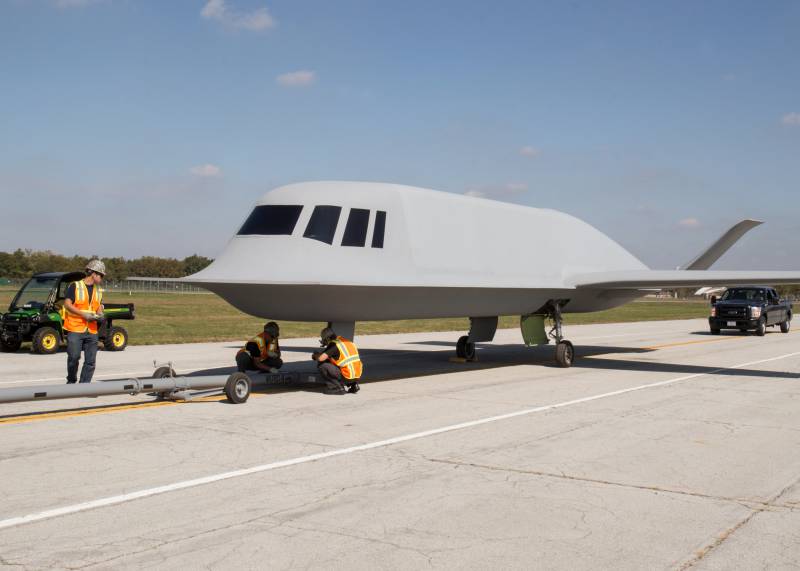
Silent Blue during transport to the new showroom, October 7 2015. Photo: National Museum of the USAF / Nationalmuseum.af.mil
In addition, the advantages and disadvantages of the project in terms of flight data were identified. So, already during the first test flights the conclusions of aerodynamic studies were confirmed. The aircraft really did not differ stable behavior. One of the creators of the project, the designer John Cashen, is widely known: "at that time it was the most unstable plane of all that a man was flying into the air."
The main task of the BSAX / Tacit Blue project was to test the main ideas and solutions regarding the reduction of aircraft visibility for radar detection devices. It was also planned to study the possibility of using such a machine as a carrier of a radar station and to determine its general characteristics. In 1985, the test program was fully implemented, after which the experimental aircraft was sent to storage. Now, experts in the aviation industry and related industries should study the experience gained and apply it in new developments.
As subsequent events showed, the original appearance of the prototype aircraft was no longer used as it was. The unusual form of the airframe gave some reduction in visibility, but seriously worsened the basic flight data and made it difficult to control the aircraft. In addition, the ongoing work on the study of the forms and contours of aviation technology have already managed to give some results in the form of more convenient designs.
The groundwork for the Pave Mover radar station was soon implemented in the AN / APY-7 project. Since the early nineties, stations of this type have been installed on reconnaissance and combat control aircraft of the Northrop Grumman E-8 Joint STARS. This aircraft was created on the basis of civilian Boeing 707, the development of which did not use any means of reducing visibility, however, it is able to fully solve the tasks.
The BSAX / Northrop Tacit Blue pilot project allowed US specialists to study in greater detail the problems of reducing the radar visibility of aircraft. In addition, he gave the opportunity to conduct a preliminary inspection of various radar systems, both aviation and ground. As a result, the plane nicknamed "Whale" or "Shamu" did not go into the series, but contributed to the creation of new types of technology, subsequently brought to mass production and operation.
After completing the tests, in 1985, the only prototype Tacit Blue prototype built was stored. The unique model of aviation technology has been idle for ten years. It was only in the mid-nineties that it was decided to declassify the aircraft and part of the data about it, and also to transfer the remaining prototype to one of the aviation museums. In this case, it was possible to free up space on one of the air bases, as well as save an interesting sample for posterity. The following year, the only Northrop Tacit Blue was transferred to the National Museum of the United States Air Force, where it is still kept. Since last fall, Flying Brick has been located in the newly built new exhibition hall.
On the materials of the sites:
http://nationalmuseum.af.mil/
http://militaryfactory.com/
https://aviationsmilitaires.net/
http://aviastar.org/
http://popmech.ru/
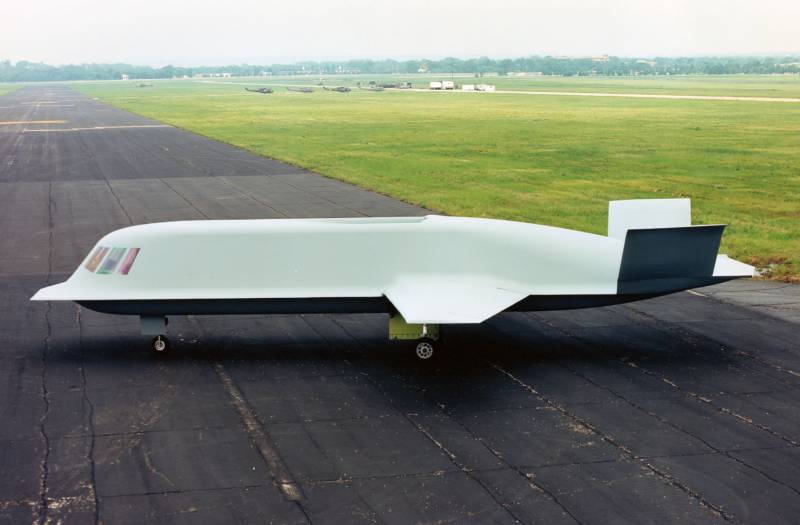
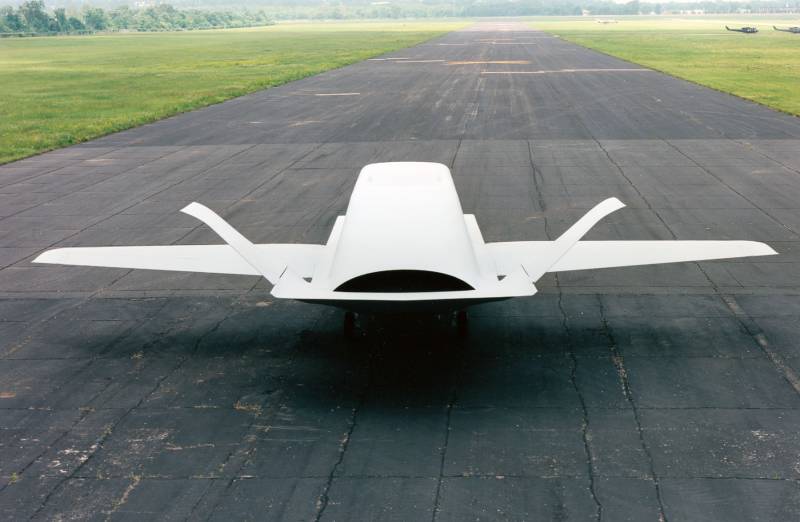
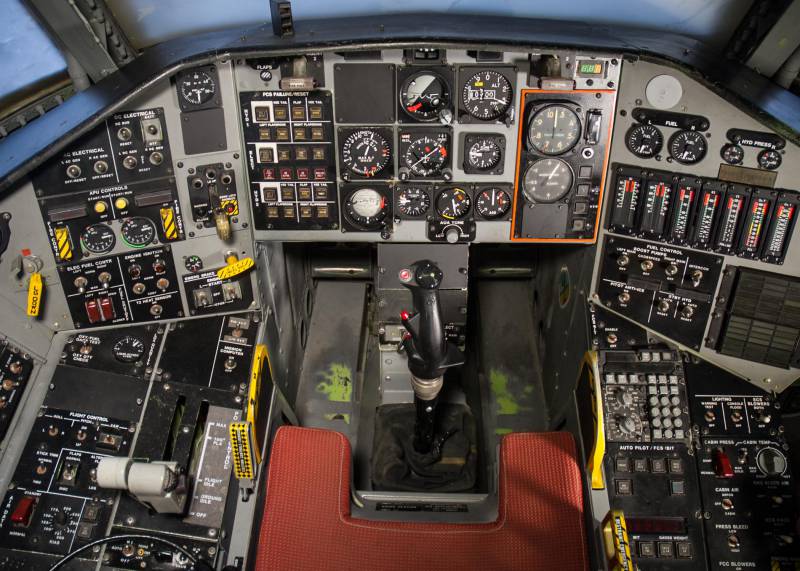
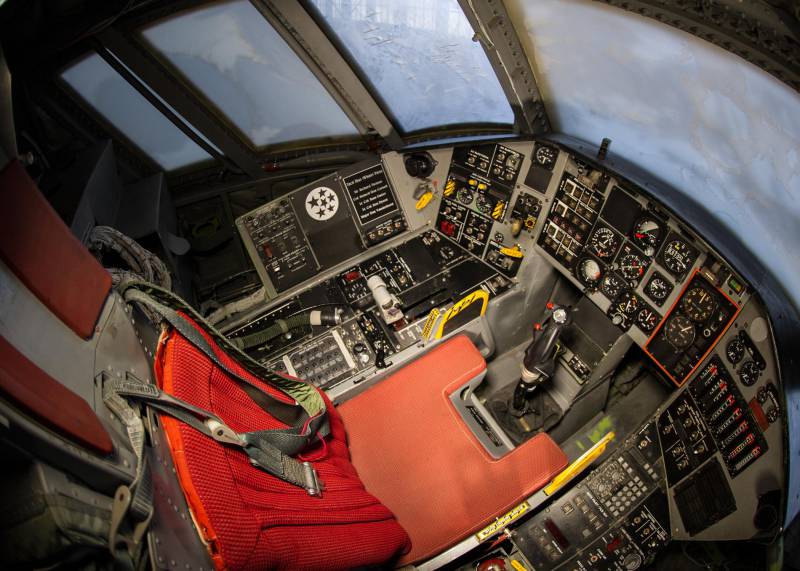
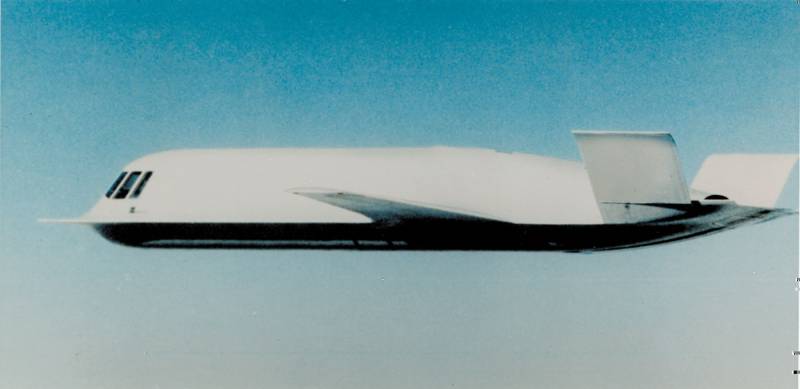
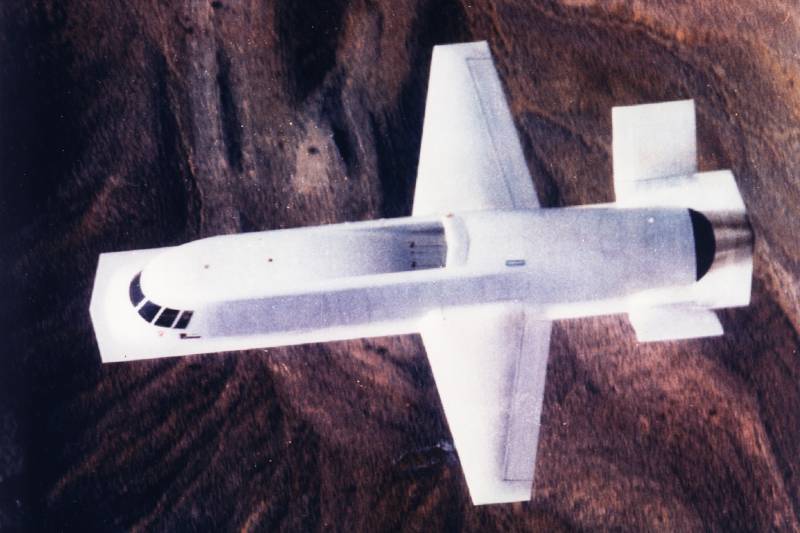
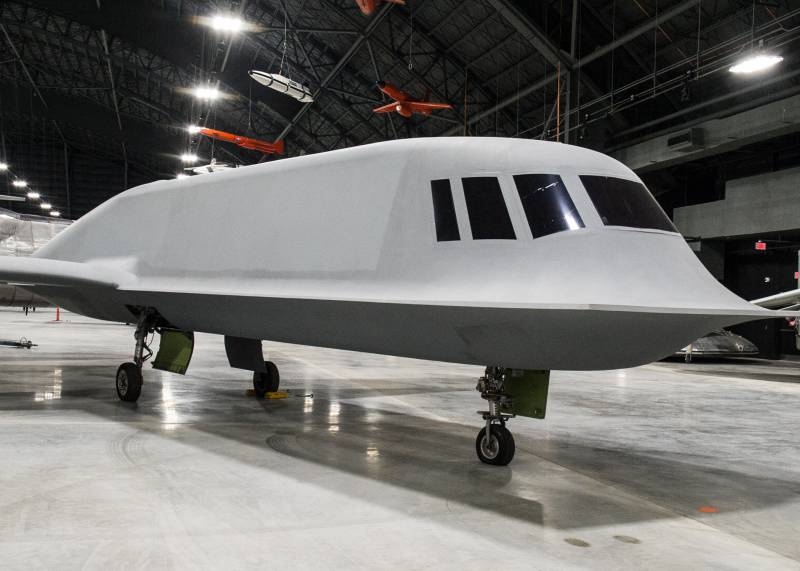
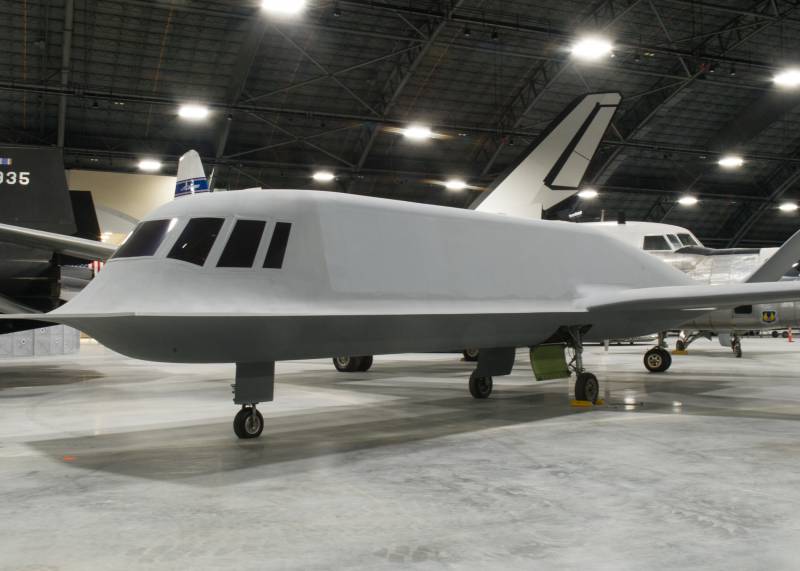
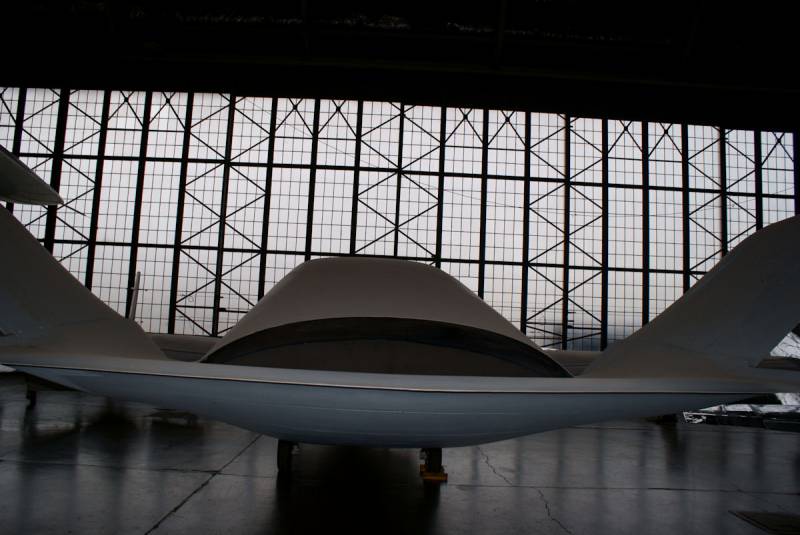
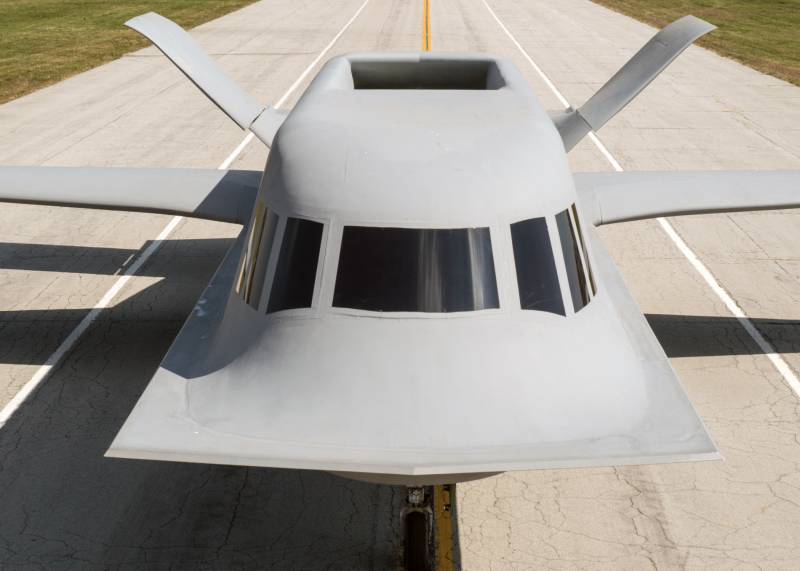
Information